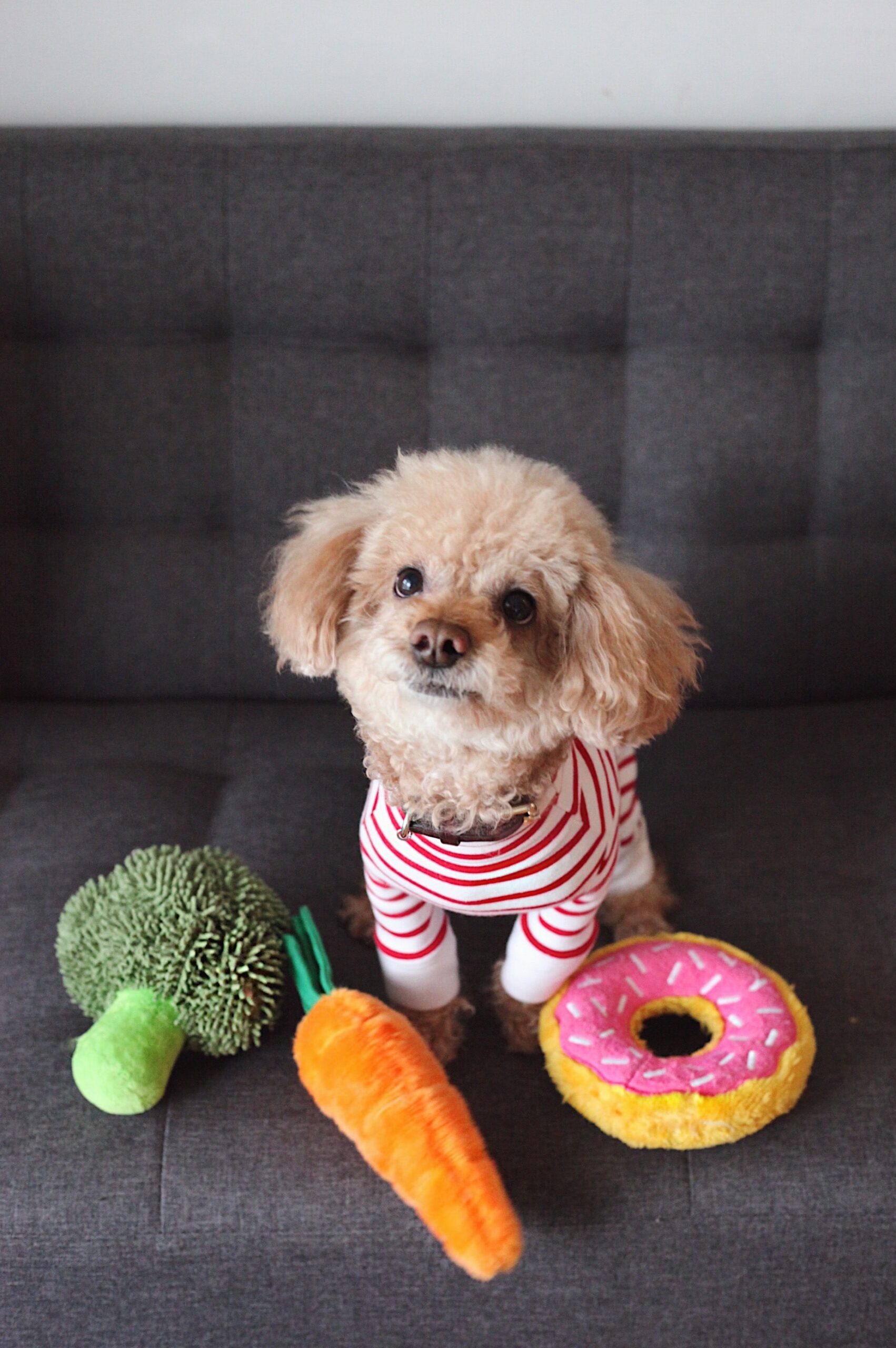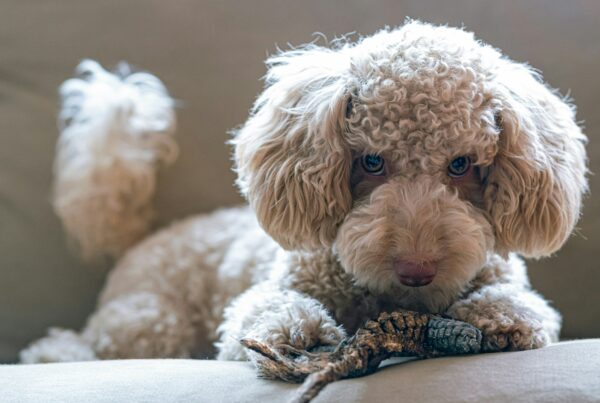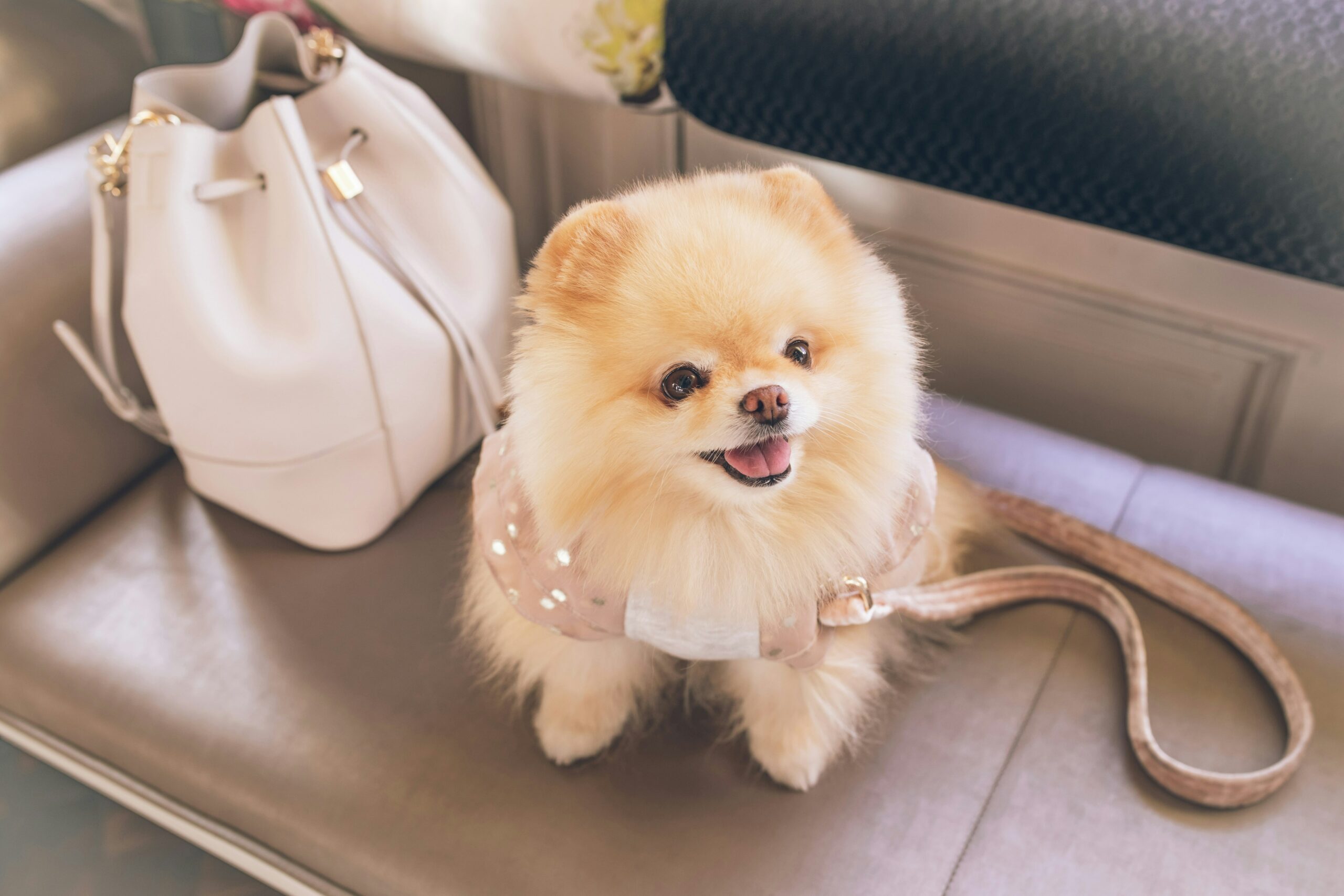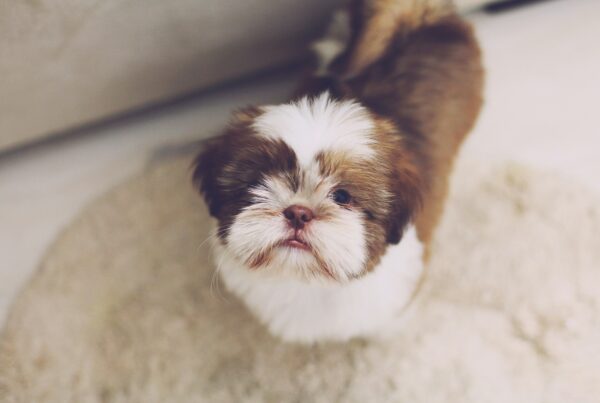Soft fur, playful licks, and tiny pink toe beans—there’s nothing like the joy a new puppy brings. But as exciting as it is, bringing home a new pup is also a big responsibility! Raising a puppy is more than just potty training and playing fetch. As a pet owner, it’s also your job to keep that new puppy out of harm’s way.
Whether you’re staying at home or out and about, here are some guidelines that will keep your new puppy safe, happy, and out of trouble.
Keeping Your Puppy Safe around the House
Keeping your puppy protected and healthy starts at home. Your house might not feel dangerous, but it’s full of potential hazards from a pup’s point of view. Luckily, making it a safe place for your puppy is simple. Here are some surefire ways to minimize risk and keep your new pet safe at home.
Puppy-Proof Your Home
Puppies are notorious for getting into things they shouldn’t. As a pet owner, it’s your job to minimize that risk by puppy-proofing your home. For starters, put away anything that could be harmful if ingested. This includes household cleaners, body care products, and medications. Keep electrical cords and small objects (in other words, potential choking hazards) out of reach. Also, some essential oils, indoor plants, and human foods are toxic to animals. If you have any of these products in your home, they should be secured in a location that your puppy can’t access.
It’s also recommended to get a trash can with a lid. If there’s no lid on it, you’re just asking for a curious puppy to knock it over and dig into those scraps from last night’s dinner. And don’t forget about the toilet bowl! As soon as your pup is big enough to reach it, that toilet just looks like a massive water bowl. Keeping the lid closed will ensure your puppy drinks out of the right bowl.
Secure All Exits
As much as your puppy loves being home, many puppies are darters that will take off if given the chance. They’re just too curious! So one of the best things you can do to keep them safe is to secure all exits in your home. Check all doors and windows that your puppy can get to, making sure everything latches properly.
If you have an enclosed yard, you’ll want to examine the fence as well. The fence should be tall enough so that your puppy can’t jump over it. Make sure the locks on all gates are functional—you don’t want them swinging open every time a gust of wind blows through. Also, look for vulnerable spots in the fence that could give your pup an opportunity to escape. Block any spaces that a puppy could squeeze through or dig under.
Use a Pen When You’re Gone
It’s easy to keep your puppy safe while you’re home, but what happens when you have to leave? Giving your puppy a safe place to stay while you’re away, like an appropriately-sized kennel inside of a pen/enclosed area (like a kitchen or entry way), can keep them out of trouble. And keeping your puppy in a crate while unsupervised doesn’t just keep them safe—it can also lower anxiety and help with potty training, too.
Choose Good-Quality Toys and Bedding
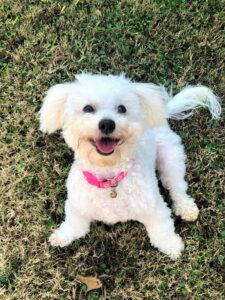
If your puppy is a chewer (and most are), they’ll need extra-tough chew toys. Invest in high-quality toys that won’t fall apart after a few days. If not, the toy could break up into smaller choking hazards. Be mindful of the dog bed you use, too. If your pup is particularly fond of tearing things up, you may opt for blankets instead of a bed. If not, you might come home to find a foam or stuffing explosion! Not only is this a pain to clean up, but it could be dangerous if your puppy tries to eat it.
Keeping Your Puppy Safe While out and About
So you’ve puppy-proofed your home and are feeling great about bringing home a new family member. That’s great! But what happens when your puppy leaves the house? There are just as many health and safety risks outdoors as there are at home. Here are some tips for keeping your puppy safe while in public.
Keep Your Dog on a Leash
Even if your dog is well-behaved and won’t run off, you never know what to expect from other animals you may encounter. Keeping your dog leashed at all times is a best practice for safety, and it’s also the law in many public areas.
Use Flea and Tick Medication
Parasite prevention is key to keeping any dog safe and healthy. All dogs are susceptible to parasites—even if they spend all of their time indoors—but puppies who venture outdoors are especially at risk. When it comes to parasite prevention, it’s not enough to use flea and tick shampoo and kill the live ones you find at home. Preventative medicine is the only way to break down the flea life cycle and protect your pup.
Be Mindful of the Weather
Certain breeds are more sensitive to extreme temperatures than others, which is why you should always check the forecast before taking your puppy outdoors. Some dogs are made for cold weather, but if your puppy isn’t, be sure to bundle them up in the winter. And when it’s hot, make sure your dog drinks plenty of water so they don’t get dehydrated. You’ll also want to protect their paws from hot surfaces by using dog shoes or sticking to the grass.
Never Leave Your Dog in the Car
Regardless of the weather, you should never leave your dog in the car. Even if it’s not hot outside and even if you’ll only be gone for a short period of time, you should either take your puppy with you or leave them at home. Your vehicle can turn into an oven in the sun, even when the weather outside is cool.
Use a Collar and Tags
Of course, your hope is that your puppy will stay with you at all times. But accidents happen! On the off chance your dog runs off (or escapes from your yard at home), it’s important that your dog’s information tags are up-to-date. Make sure your dog wears a collar when you’re away from the house, and use dog tags to relay important information. You can print a dog tag with your contact info at most pet stores, and your vet will provide a microchip and vaccine tag if applicable. This way, even if your puppy escapes, whoever finds them will be able to get them back home quickly and safely.
Travel Safely
We know you buckle up every time you get in a vehicle. But is your puppy properly restrained, too? If your puppy is a frequent car rider, consider purchasing a canine safety restraint. It will keep them safely in place through sharp turns, hard stops, and potential accidents.
Use Caution around Water
Your puppy might be a strong swimmer, but skill is no match for strong currents. Be extra careful around lakes, rivers, or oceans. It’s important to keep your dog on a leash at all times when you’re outdoors, but especially vital if you’ll be around water. And if you do choose to take your dog swimming, be sure to use a lifejacket. It will keep your pup afloat and make it easy to rescue them if they get tired of paddling.
Soak Up the Puppy Cuddles!
The more time you spend together, the more you’ll learn about your puppy’s personality and habits. Once you figure out their quirks—Are they a chewer? A digger?—the better equipped you’ll be to puppy-proof your home and keep them safe.
Being a puppy parent is challenging, but it’s also one of the most rewarding things you’ll ever do. With your safety checklist taken care of, you’ll be able to sit back, relax, and enjoy the puppy cuddles.
photo credit: https://unsplash.com/photos/9lVdutKM9vg
https://unsplash.com/photos/fq4mvA-xJak
Love our content? Share it with a friend or link it to social media. Like short clips of cute household pets? Training tips? Follow us on instagram @nydognanny or on YouTube at nydognanny. Have some news you needs to get to dog and cat parents stat? Email info@newyorkdognanny.com with your article pitch.

